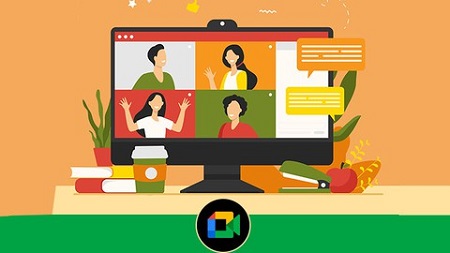
English | MP4 | AVC 1280×720 | AAC 44KHz 2ch | 8h 38m | 4.43 GB
Learn webrtc and build a website like google meet from scratch using WebRTC, socket io & Javascript.
Hi and welcome to the course “Build a Google Meet clone from scratch: WebRTC, Socket io & Javascript””.
webrtc and socket io is combination of powerfull technology where you will able to transfer data in real time with low latency. And thats why its been considering the best technology to build video conferencing app. So If you are webrtc enthusiastic, want to build webconferencing website also want to learn socket io where you are going to build group conferencing webapp in real time, low latency data transfer then you are in the right place.
In this course we are going to learn how to create a landing page where users will able to host a new meeting or will be able join in a existing meeting by using meeting code. Then in the webconferencing page step by step we will create audio and video streaming for perticular meeting with related functinality. Where user not only can interect with audio video but also user will able to chat in a room. User will able share files and photo. There user can see total number user participant with details. Along with camera input we will also create system to share screen in a meeting. And also we will create recording system where user will able to record full meeting with audio. Not last but least we will create bunch of functionality to make the website more functional.
What you’ll learn
- Learn how to build a group conference website
- Become an advanced, confident, and modern WebRTC developer from scratch
- Skill proficiently in WebRTC, Socket io and Javascript
- Understand how file sharing works in a website
- Understand how to create a new meeting or join in a existing meeting
- Learn pro level javascript pipline work flow.
- Learn how to send to a particular user in a meeting
- Learn how to broadcast using socket io
Table of Contents
Welcome
1 Welcome
Landing Page Design and Functionality
2 Section Resource
3 Create folder structure and setup project environment
4 Design landing page – part 1
5 Design Landing Page – Part 2
6 Create Landing Page Functionlity
Home Page Design
7 Design Home Page – Part 1
8 Design Home Page – Part 2
9 Apply CSS to Home Page
Server and Socket.io Setup
10 Basic Javascript Setup
11 Express Server Setup
12 Setup Socket at Client Site
Group Audio Video Streaming
13 Let other users know about me
14 Add users and set connection
15 Set Offer Process
16 Completion of setconnection Function
17 Completion of sdp process function
18 Inform me about other users
19 Creating option for audio video stream
20 Video process
21 Testing basic app
22 Setup UpdateMediaSenders
23 Remove stream, process audio and fix issues
Screen Sharing System
24 Create Screen Sharing System
25 Disconnect users
Create Messaging System
26 Designing message interface
27 Creating messaging system – Part 1
28 Creating messaging system-Part 2
Create Participant Details
29 Participant show – Part 1
30 Participant Show – Part 2
Miscellaneous Functionality
31 Creating leave meeting functionlity
32 Creating Meeting Details
33 Request Full Screen
34 Add Miscellaneous Functionality
Create File Sharing System
35 File Sharing System – Part 1
36 File sharing system part 2
Meeting Recording System
37 Designing Record Buttons
38 Create Recording System
WebRTC Glossary
39 MediaStream
40 RTCPeerConnection
41 Data Channel
42 TCP UDP
43 ICE
44 SDP
45 STUN
46 TURN
47 DTLS
48 SRTP
49 SCTP
50 TLS
51 HTTP & HTTPS
52 SSE
53 Websocket
54 XHR
Featured Upload Project in Live Server
55 Upload in Live Server
Conclusion
56 Congratulation
Resolve the captcha to access the links!